7 Strategies That Make IKEA so Successful
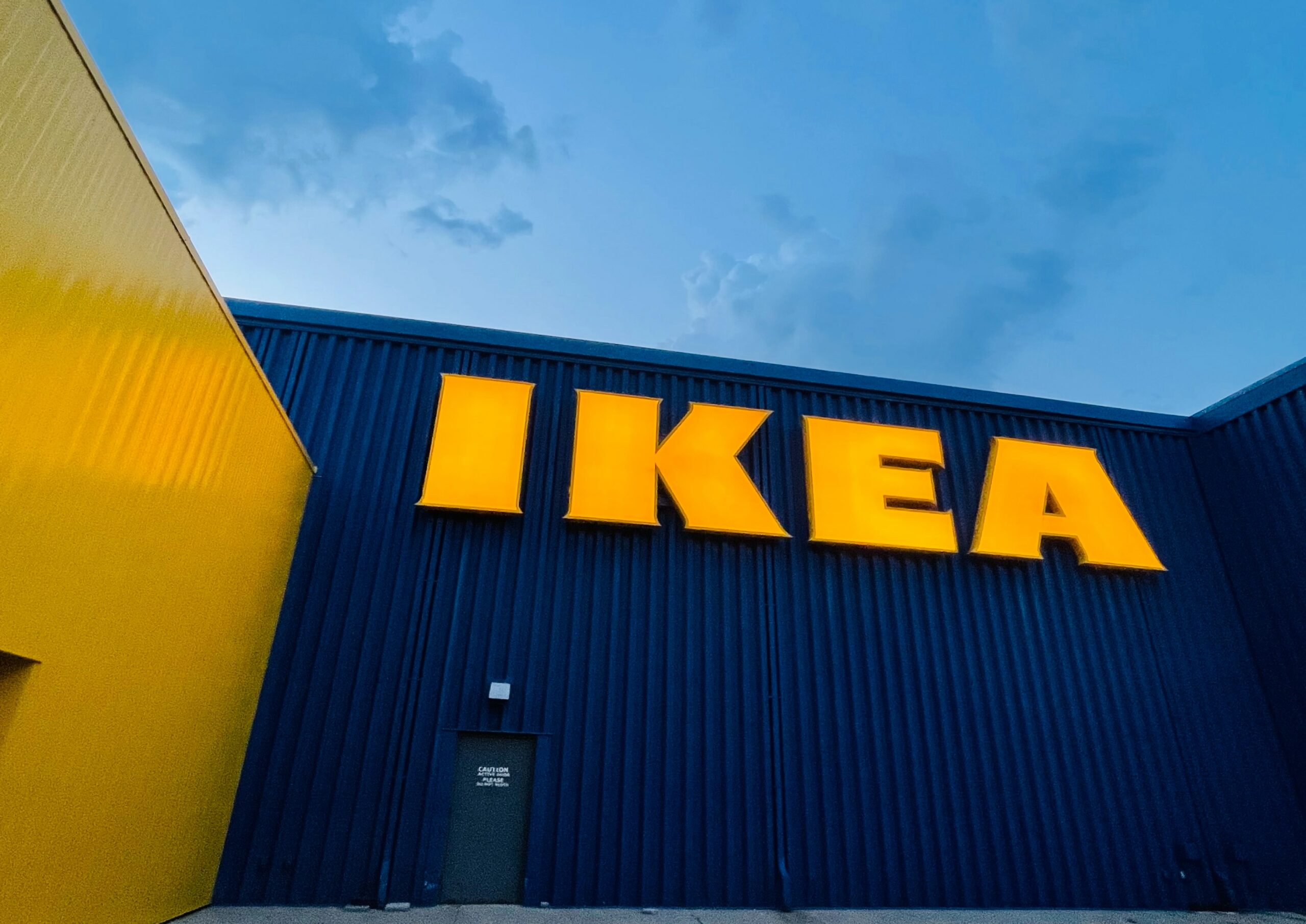
When many think of furniture, especially buying furniture, they think IKEA. If you walk around IKEA you might even recognize several items from your friends or families’ homes.
The Swedish furniture company founded in 1943 is immensely widespread, in fact, there are stores in over 50 countries in the world.
But why IKEA? What business strategies could prompt such a successful company?
Strategies:
Interested in other strategies from other companies? Check out
Cheap but Wanted
The value of IKEA’s furniture is unmatched. Many can sell low-cost furniture or high-end furniture, but what IKEA does is sell low-cost furniture that is still desired by society.
While keeping the price low they managed to entertain socially wanted, modern, and stylish products.
Low-cost furniture was clearly nothing new in the 1940s, but oftentimes cheap can be paired with unwanted, socially unacceptable, and bad quality items.
IKEA has even made people who can afford costlier furniture buy from their stores.
One part of this success is their transparency.
Perhaps you’ve noticed you have easy access to knowing the materials and design of products because they are clearly written out for you on items. This makes people more trustworthy and accepting of what they are buying when they know what it truly is.
People intuitively like to differentiate companies by one aspect, and IKEA has adopted the fact that they have affordable style, making it easy for people to identify. This is their market: low-cost desired items.
Okay…but how?
The Packaging
It all starts at the beginning. Manufacturing.
IKEA has managed to bring manufacturing and labor costs down immensely through one main concept: flat-packed furniture. This concept has contributed much to IKEA’s success.
Shipping: Everything is shipped and sold in these flat-packs, or in other words, Ready To Assemble (RTA) furniture. This allows more to be stored in shipping containers, maximizing the space, and making shipping easier and more cost-effective.
For comparison, shipping RTA could cost $20 for a particular item, while the same item pre-assembled shipped could be $50-$500, depending on travel distance, size, and amount. The furniture is essentially “designed to fit boxes” not the other way around.
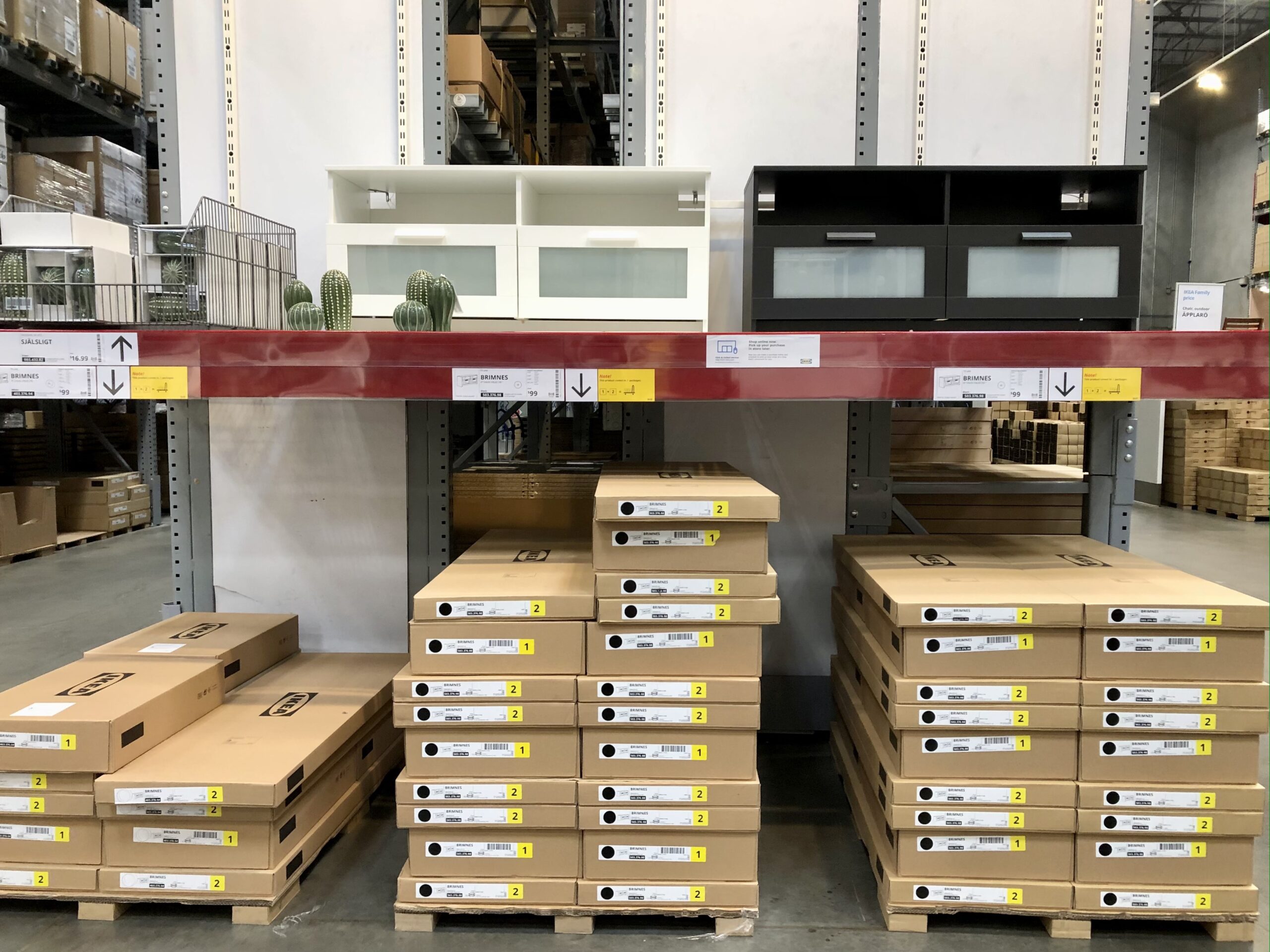


Labor: The other benefit is that the people that buy the furniture have to assemble it themselves, hence RTA. This actually has another psychological benefit we’ll get to next.
RTA allows IKEA to save on labor costs since they don’t have to pay for the assembly of the furniture.
Mass production: IKEA’s designs are not only able to fit in flat-packs but are designed to be minimal. Designs like this are not too complex, allowing mass production to be cheaper. They have also turned to advanced automation technology for this production.
To make cheap look good, simple styles are the easiest way to go.
Storage: Other than maximizing space in shipping containers, flat-packs maximize space in IKEA stores and other storage places.
All of these costs saved in the end, allow those furniture pieces in store to be affordable for you.
The IKEA Effect
Yes, there is such a concept as the “IKEA effect”. Can you guess what it is? It stems from the simple idea of connection.
Many successful businesses offer a form of connection whether that be personalization in a hospitality business or custom-made shoes.
What IKEA has is the self-assembly which is required to have a complete piece of furniture. Of course, the reason for this RTA spreads beyond the connection it builds with the customer, but it is a plus.

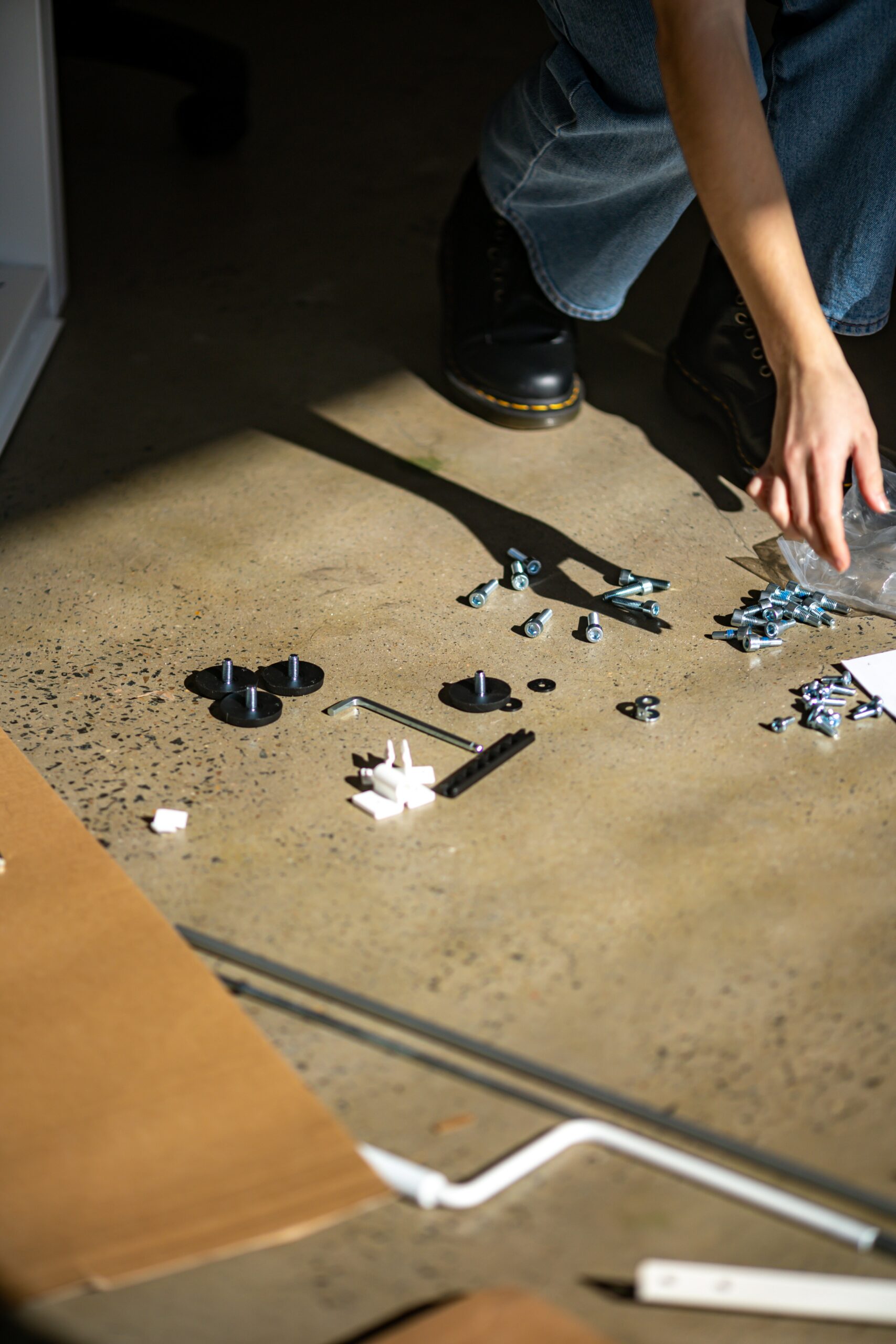
When you build, or rather assemble, your own piece of furniture you’re more likely to have a stronger connection with it. This is the opposite of furniture you simply bought pre-assembled. People have stories of building IKEA furniture, and they end up more attached to the furniture.
This is the IKEA effect.
Appeals to Niche Markets
Appealing to niche markets can be a good tactic in business. As mentioned in the Cheap but Wanted section, even people who are able to buy more high-end furniture enjoy IKEA.
Unlike other furniture retailers, IKEA discloses the materials in their items. There they are differentiating themselves from other low-cost retailers who didn’t display that information before IKEA started to.
This is a benefit to becoming acceptable for high-end shoppers, specifically in the market for temporary/short-term furniture. The people in this niche may include the military, other people who move frequently, or students.
After they use the furniture for a little while, they get rid of it, so IKEA is their destination.
Another niche market IKEA addresses are homes with narrow doors/stairways. This may be one of the reasons it’s so widespread in Europe since older homes usually consist of narrow features.
The flat-packs easily fit through these types of homes, while pre-assembled are either difficult or impossible to move around in there.

Store Layout
Many think of IKEA as a maze. It’s almost like a little trip or adventure to visit the store, so much so IKEA even has a map. But most things, including this, are intentional.
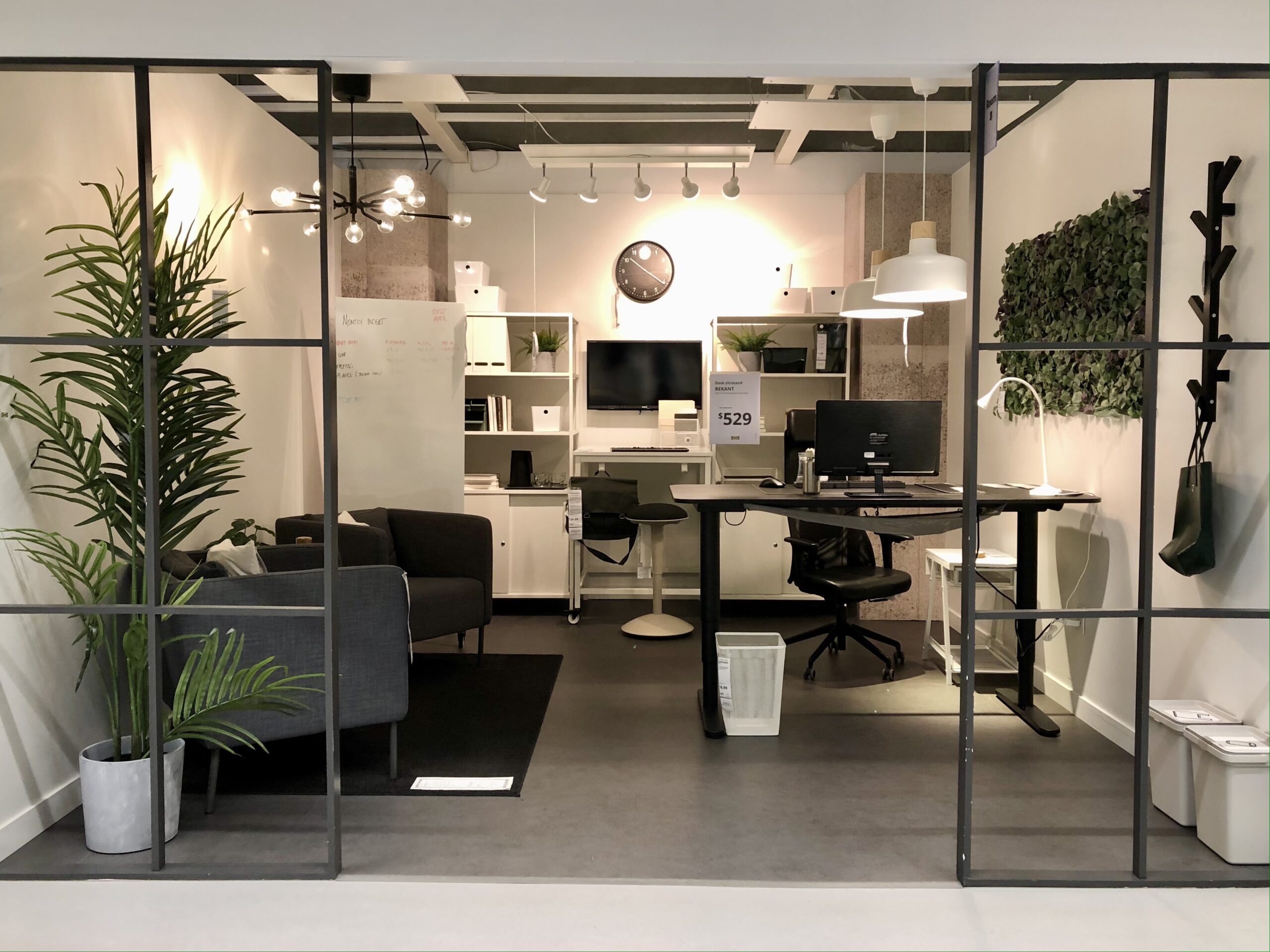
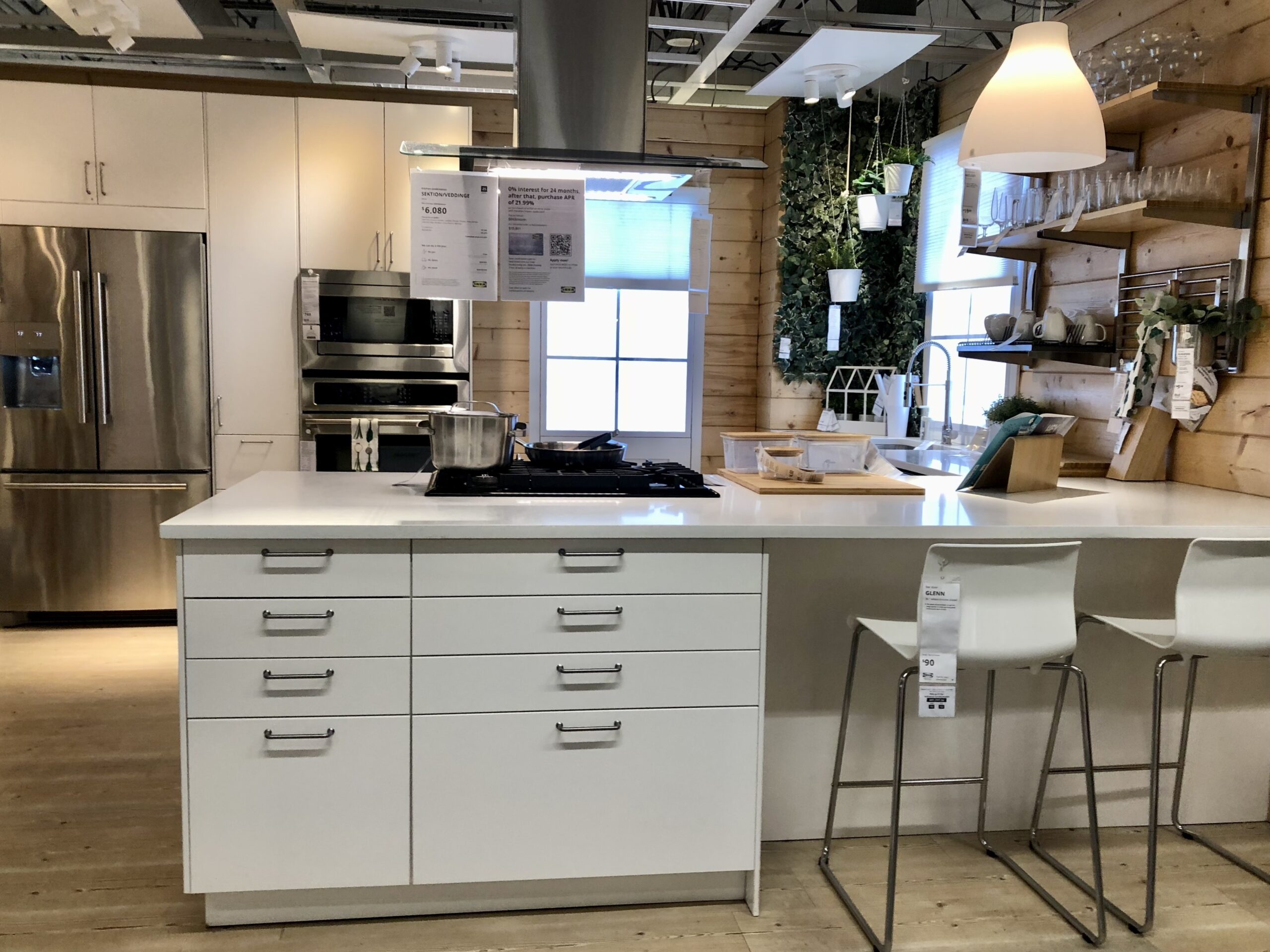
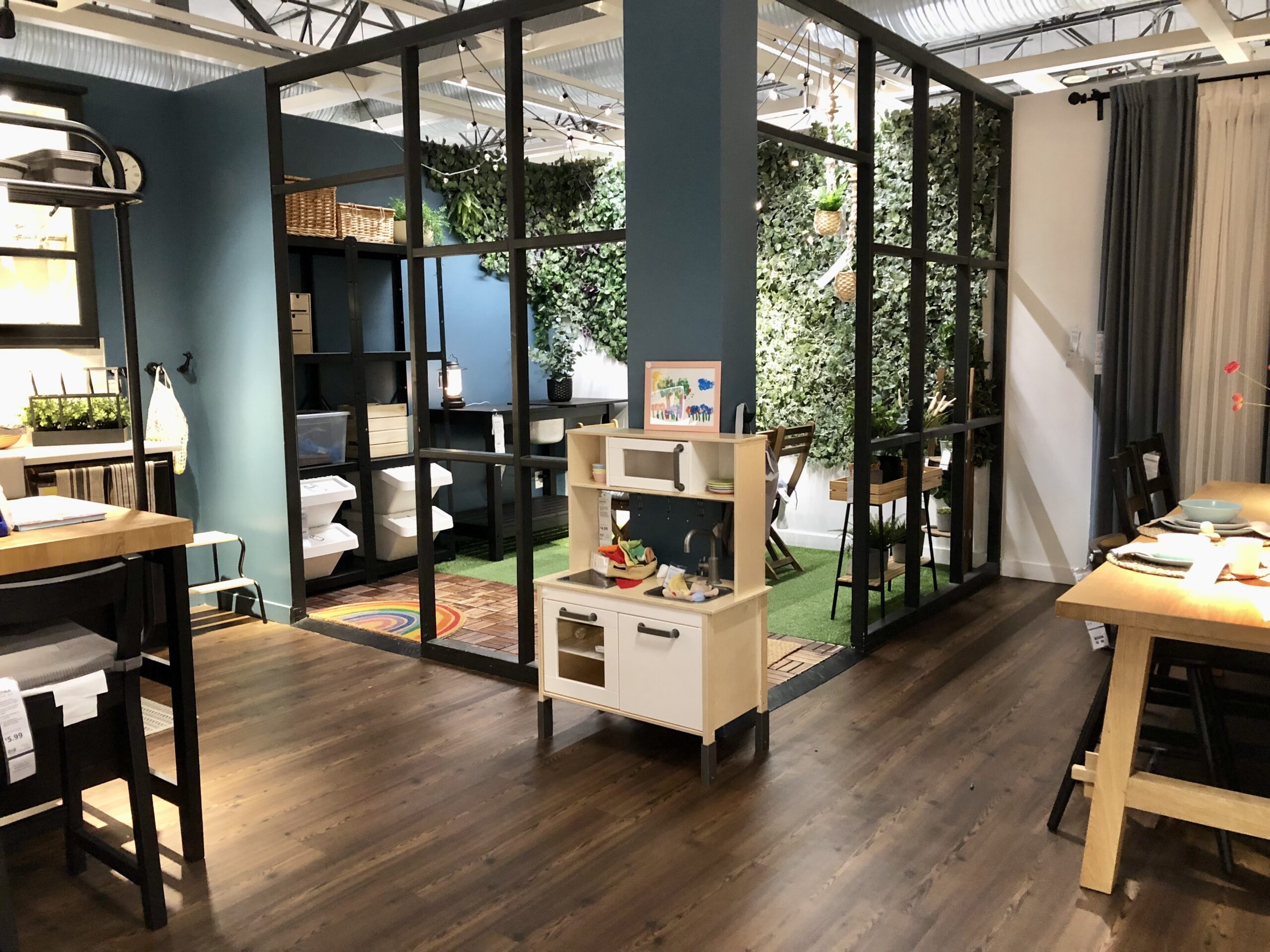
Forcing you to walk the IKEA maze allows for opportunities to get caught up on all the setup furniture. You can dream about and get first-hand experience of your ideal kitchen or bedroom setups.
In other terms, many many impulse buys can occur throughout strolling the path.
Of course, there are shortcuts, but even with those you still come across lots of products. They essentially make you pass through everything.
You also get the feeling that going to IKEA is an experience rather than a necessary quick trip to the obligatory furniture store.


And while you walk around you’re bound to come across the smell of the Swedish food and cinnamon rolls, bringing us to the next tactic.
IKEA Restaurant
Have you met someone who hasn’t been tempted by food? I haven’t. Fortunately, IKEA serves its own cafe in store.
Not only does this allow for more revenue for the company but it adds something unique to the stores that people talk about and indulge in. It creates a new atmosphere that other furniture stores don’t have.
But it’s not just any food. It’s Swedish. In fact, some people only visit IKEA for the restaurant. Perhaps for the well-known Swedish meatballs.
It’s important to note that even with this feature, IKEA upholds its other characteristics: cheap and still good.
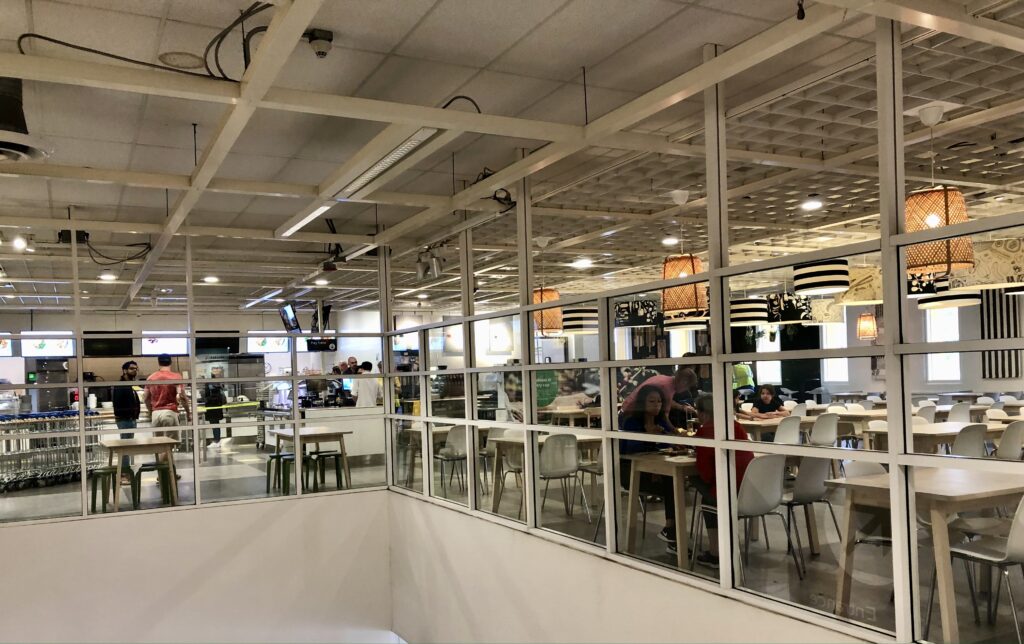
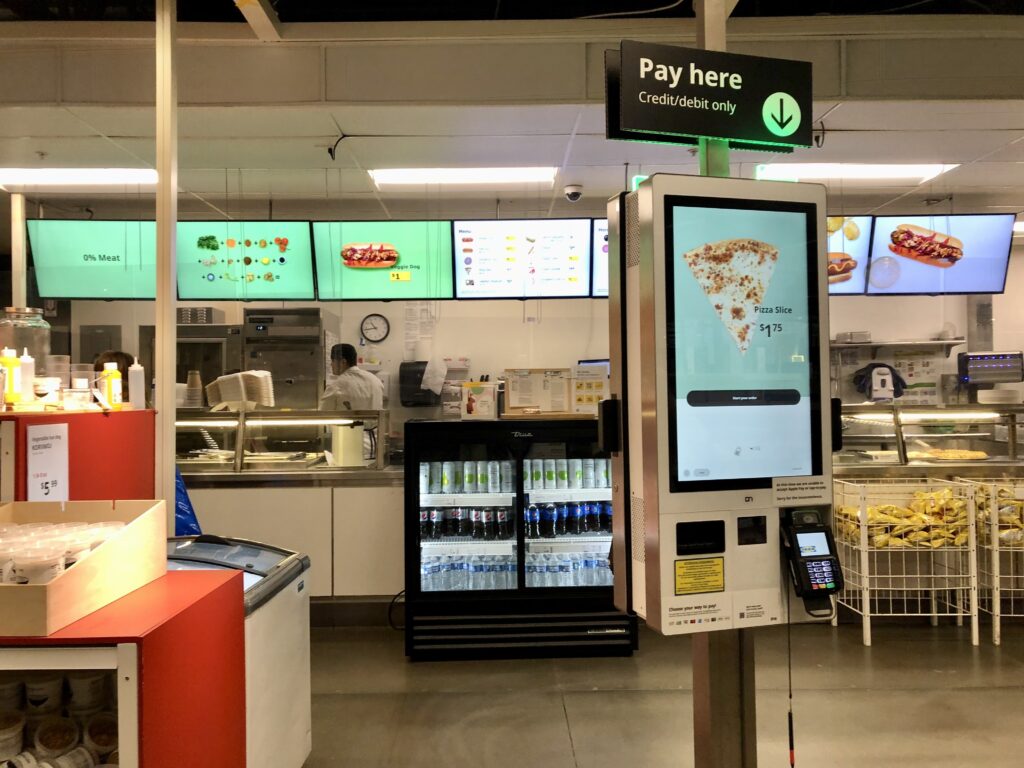
But why the cafe feature?
Well, shopping can be exhausting, and shopping for furniture while strolling around IKEA is even more so. Then it’s quite convenient for the customer to have the tempting food right in the middle and in turn producing more revenue for IKEA.
The store also refrains from losing customers through hunger. They could leave due to the lines or try to make the shopping trip quicker to go get food, but the cafe tries to prevent this.
The food also produces the benefit that customers stay longer in the store, i.e. more chances for sales and connections.
Constantly Growing
Innovation is a constant need for businesses. IKEA’s cafe and RTA is not the only innovative aspect. IKEA is continuously investing and improving for the future. They have acquired a digital presence, such as shopping online.
Like many other businesses, IKEA is focusing on sustainability, which becomes a more and more dire need.
They are also spreading their presence across cities since the locations are sometimes farther than most people are often willing to travel, whether that be due to time or chance.
Being so widespread around the world also comes with the responsibility of tailoring the stores to the country’s differences such as climate and fashion. IKEA does this while maintaining its primary brand of simple, stylish, and cheap furniture.
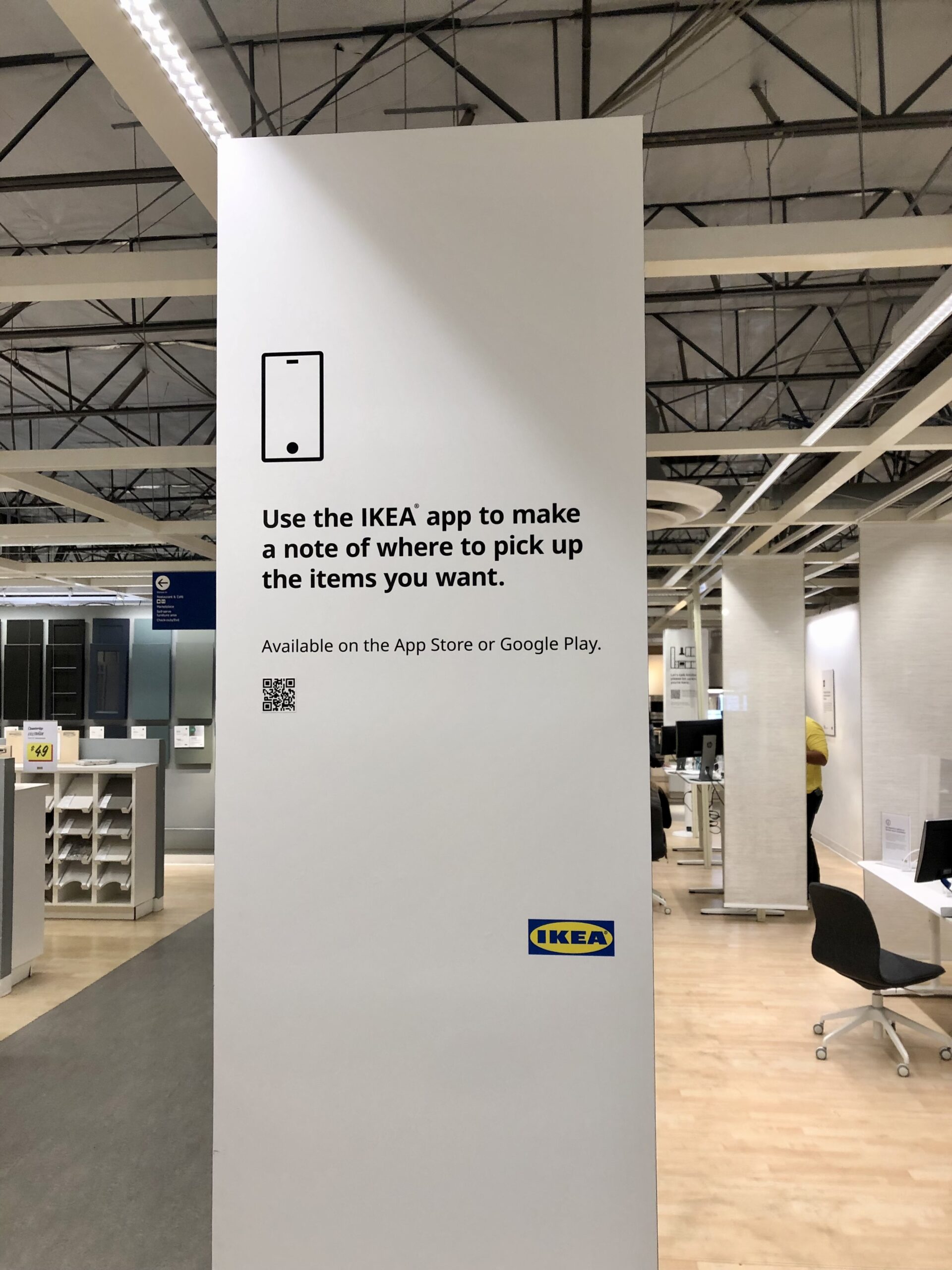

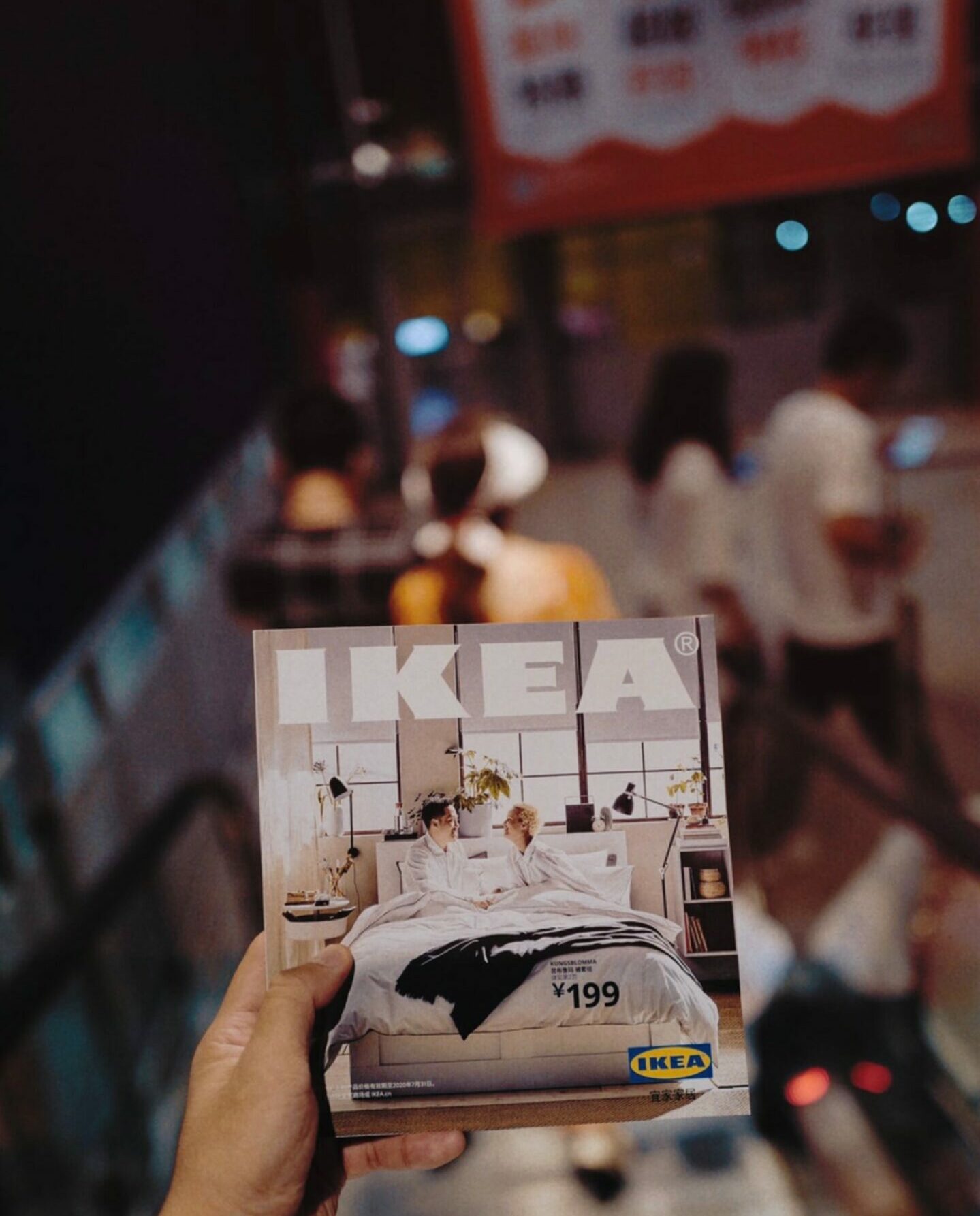



Leave a Reply